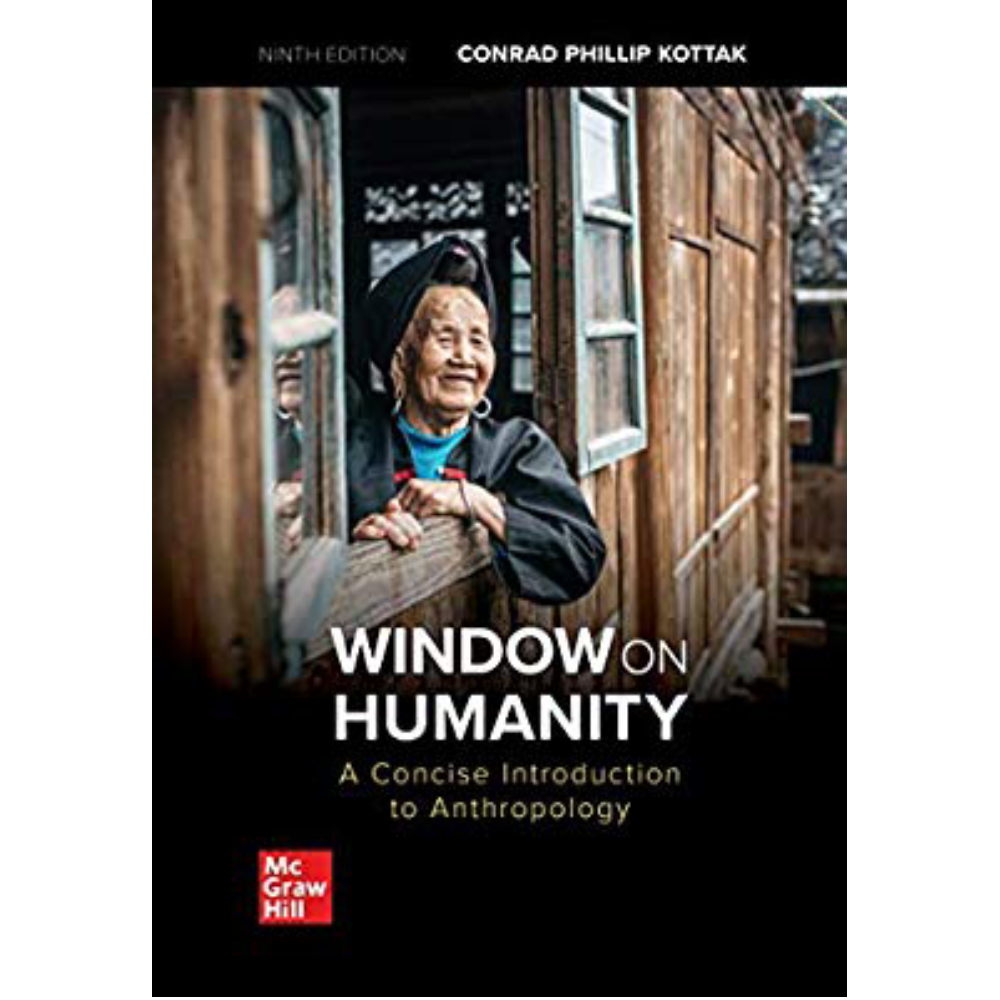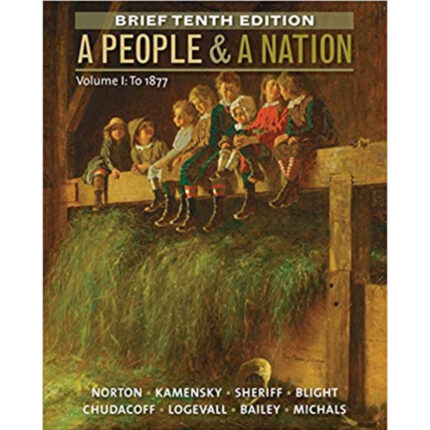Window On Humanity A Concise Introduction To General Anthropology 9th Edition By Conrad Kottak – Test Bank
Chapter 11
Making a Living
1. In recent times, many foraging groups have been exposed to the idea of food production but have not adopted it. Why?
A. They did not have the skills or tools to do so.
B. People naturally resist change, especially foragers.
C. Their own economies provided a perfectly adequate and nutritious diet, with a lot less work.
D. They had to ask permission from the state to do so.
E. They did not realize the advantages of food production.
Accessibility: Keyboard Navigation
Learning Objective: Examine foraging, including correlates of foraging.
Topic: Foraging
2. Which of the following was a characteristic shared by recent foraging communities?
A. They lived in marginal environments that were of little interest to food-producing societies.
B. They spoke simplified languages.
C. They fished a great deal.
D. They relied on welfare supplied by state-level societies.
E. They devolved to foraging from a more advanced level of subsistence.
Accessibility: Keyboard Navigation
Learning Objective: Examine foraging, including correlates of foraging.
Topic: Foraging
3. Despite differences arising from environmental variation, all foraging economies have shared one essential feature:
A. their willingness to test out new food-producing technologies to see if they are any better than what they are used to.
B. their reliance on welfare supplied by state-level societies.
C. their reliance on available natural resources for their subsistence, rather than controlling the reproduction of plants and animals.
D. their interest in developing irrigation technologies to control sources of water.
E. their emphasis on devising new forms of organic pesticides.
Accessibility: Keyboard Navigation
Learning Objective: Examine foraging, including correlates of foraging.
Topic: Foraging
4. This chapter’s description of the San Bushmen’s relation to the government of Botswana provides a telling example of how
A. human rights are limited.
B. foraging communities’ identities are being reshaped by their relationships with NGOs.
C. the foraging lifestyle has finally become a thing of the past.
D. foragers are willingly choosing to change their lifestyles and become a part of the global village.
E. more and more foragers have come under the control of nation-states and are now influenced by the forces of globalization.
Accessibility: Keyboard Navigation
Learning Objective: Examine foraging, including correlates of foraging.
Topic: Foraging
5. Yehudi Cohen’s adaptive strategies
A. suggest multidirectional relationships between a society’s mean and its mode of production.
B. suggest that economic systems are a better way of categorizing societies than relying on cultural patterns.
C. suggest an association between the economies of societies and their social features.
D. suggest hypothetical correlations—that is, a causal relation between two or more variables, such as economic and cultural variables.
E. have strong predictive powers when analyzed in computer models.
Accessibility: Keyboard Navigation
Learning Objective: Examine foraging, including correlates of foraging.
Topic: Foraging
6. Which of the following is NOT characteristic of band-organized societies?
A. permanent villages
B. all related by kinship or marriage
C. minor contrasts in prestige
D. fewer than 100 people
E. an egalitarian social structure
Accessibility: Keyboard Navigation
Learning Objective: Examine foraging, including correlates of foraging.
Topic: Foraging
7. Which of the following are most characteristic of foragers?
A. unilineal descent and ancestor worship
B. permanent villages and full-time priests
C. a redistributive economy and specialized leadership roles
D. territoriality and organized warfare
E. high mobility and small groups with flexible affiliations
Accessibility: Keyboard Navigation
Learning Objective: Examine foraging, including correlates of foraging.
Topic: Foraging
8. Why do anthropologists question the idea that present-day foragers can be compared to Paleolithic foragers?
A. Present-day foragers have been in contact with food-producing and industrialized societies for long periods of time and all live within nation-states that inevitably affect their livelihood.
B. There are no present-day foragers.
C. The types of foraging vary so widely that few generalizations can be drawn.
D. Paleolithic foragers were prelinguistic.
E. Paleolithic foragers were not Homo sapiens.
Accessibility: Keyboard Navigation
Learning Objective: Describe adaptive strategies based on food production.
Topic: Adaptive Strategies Based on Food
9. Which of the following is a characteristic of most foraging societies?
A. sedentism
B. social stratification
C. irrigation
D. large population
E. egalitarianism
Accessibility: Keyboard Navigation
Learning Objective: Examine foraging, including correlates of foraging.
Topic: Foraging
10. A horticultural system of cultivation is characterized by
A. developing almost exclusively in arid areas.
B. the use of irrigation and terracing.
C. intensive use of land and human labor.
D. lack of proper knowledge about plant domestication.
E. periodic cycles of cultivation and fallowing.













Reviews
There are no reviews yet.